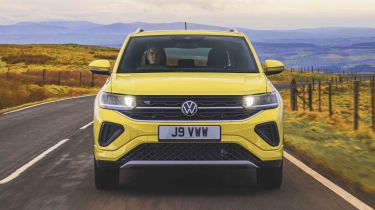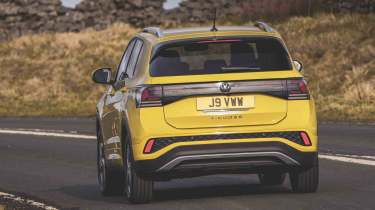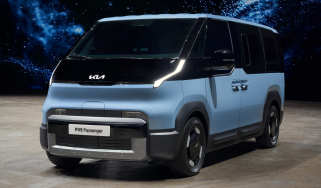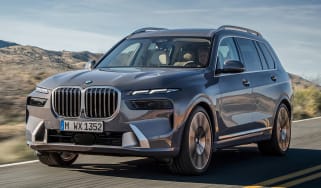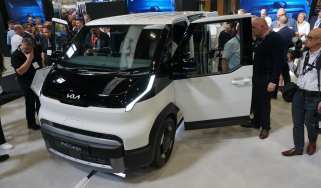Volkswagen T-Cross - Engines, performance and drive
The simple engine lineup of the VW T-Cross works well; the driving experience is safe and easy rather than thrilling

As you’d expect with most new cars, the Volkswagen T-Cross is a car that you can just get into and instantly feel comfortable with. All of the control weights are nicely matched to one another; the clutch engages smoothly when you press the pedal, the throttle response is consistent through the rev range, and the steering is light and precise. Throw in the compact dimensions, and the T-Cross causes little stress when driving around town.
Head out onto the open road, and the handling is safe rather than entertaining like the Ford Puma. There’s plenty of grip and the balance is neutral, but the steering offers little in the way of feedback. The higher centre of gravity is noticeable when compared to the Polo on which the T-Cross is based, but the driving position is much more like an SUV, so it gives you a good view out.
The ride is smoother than in a SEAT Arona, but the 18-inch wheels of R-Line models make the T-Cross fidget over low-speed bumps more than the smaller wheel sizes, although the VW does settle down the faster you go. The big wheels increase road noise, too, so refinement on a motorway cruise is better with the smaller 16- or 17-inch wheel sizes certain models get. The six-speed gearbox of the more powerful 113bhp 1.0-litre engine contributes to noise reduction by keeping the revs lower than they would otherwise be with the entry-level engine, which only gets a five-speed gearbox. The brakes, meanwhile, feel strong and inspire plenty of confidence for emergency stops.
0-62mph acceleration and top speed
The T-Cross’s engine line-up is straightforward: there’s a 1.0-litre turbocharged petrol engine offered with two power outputs (94bhp and 113bhp), and a 1.5-litre petrol unit with 148bhp.
Used - available now

2023 Volkswagen
T-Cross
12,851 milesManualPetrol1.0L
Cash £15,999
2023 Volkswagen
T-Cross
23,030 milesManualPetrol1.0L
Cash £13,197
2023 Volkswagen
T-Cross
13,358 milesAutomaticPetrol1.0L
Cash £19,435
2023 Volkswagen
T-Cross
38,873 milesManualPetrol1.0L
Cash £14,320The lesser 94bhp petrol model is okay, particularly if you only intend to drive around town. It accelerates from 0-62mph in 11.2 seconds, and pulls smoothly from around 2,000rpm, even in fifth gear. It will struggle below that point, so steep uphill sections on a country road may need a downshift. Officially, the top speed stands at 112mph.
For most people, we’d recommend the more powerful 113bhp unit. At 200Nm, its maximum torque is 25Nm higher than in the cheaper model, and is available across the same rev range. It’s a similar story when it comes to power: both variants hit peak power at 5,000rpm, but the 113bhp unit can maintain its figure for a further 500rpm. As a result, the engine feels stronger at any speed, as shown by its 10.0 second 0-62mph time and 120mph maximum. The automatic version has a marginally slower acceleration time of 10.3 seconds.
The 1.5-litre petrol is only available with Style and R-Line trims, and unsurprisingly has the best performance figures of the lot. It takes 8.4 seconds for the 0-62mph sprint and the top speed is 124mph. The SEAT Arona and Skoda Kamiq both offer this engine, with the SEAT trailing the VW to 62mph by 0.1 seconds, and the Skoda having a matching 8.3-second sprint time.
Both the five- and six-speed manual ‘boxes shift smoothly and are paired with a light clutch pedal, which makes driving in heavy traffic easy. The DSG dual-clutch auto, on the other hand, isn’t the best in the business: it can be jerky when parking, and is often slow to kick down when accelerating out of a corner.

